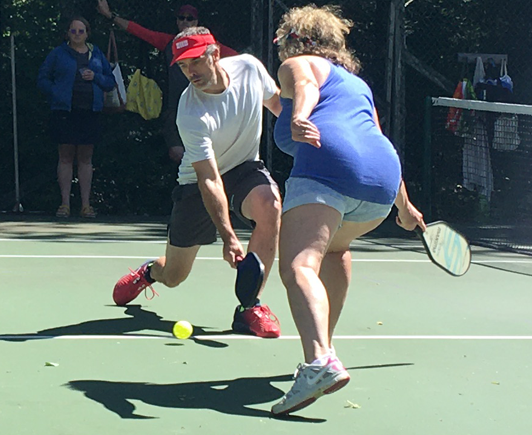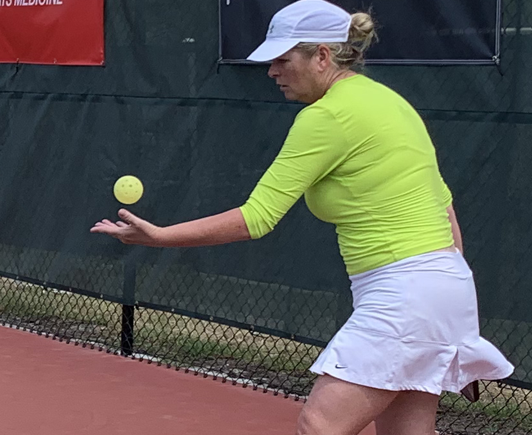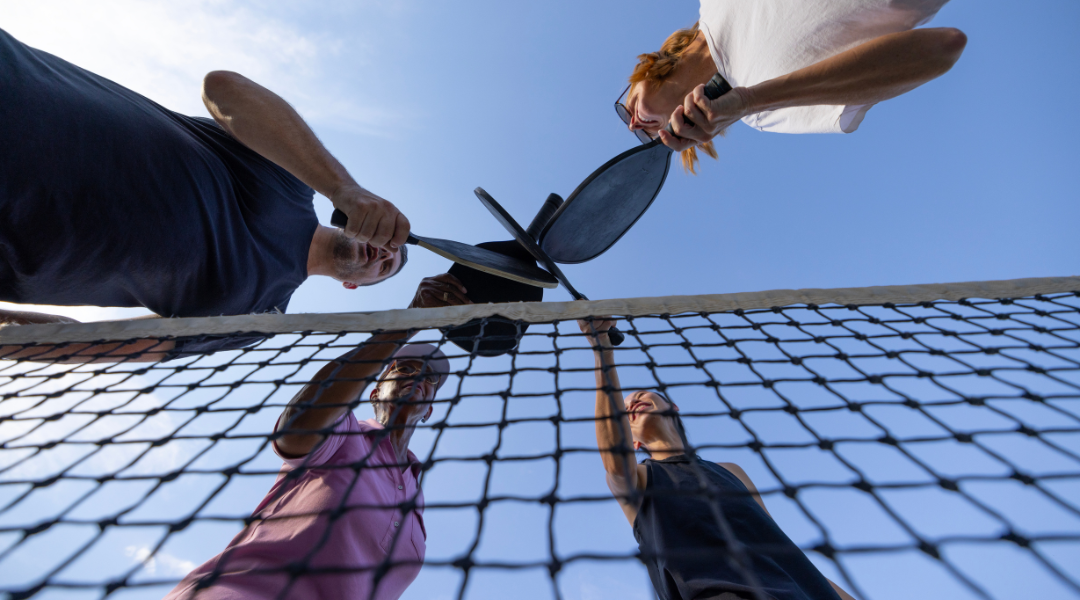

For those of you that watch pro pickleball and say, sometimes they have the forehand take the middle when it isn’t truly their cover, I hear you. However, they are pros! Pros know how to hit to places where they will stay in position. They also have lightning-fast reflexes that allow them to get back to cover. This article isn’t for pro players. It is for 2.5-4.5 level players.
Many recreational players aim for a hard, fast return of serve, thinking it will win the point. However, due to the speed of the ball when the opponent gets their shot back this often leaves the player that hit the fast return stuck in the transition area dealing with a difficult shot at their feet. A medium paced to slower return gives more time to move forward, provided it’s deep enough. A high deep return can be beneficial, allowing for plenty of time to move forward and putting the ball in a bad strike zone for your opponent’s third shot. Just ensure the ball lands in the back quarter of the court so it isn’t attackable.
While controlling the kitchen line is important, there are times when moving back is strategically advantageous. Obviously if someone lobs, you’d move back to line yourself up under the ball. Or if you or your partner pops the ball up you could back up to give more time to react, just be sure you are set when you are hitting. If your opponents are at the baseline, stepping back to put the ball in a better strike zone can be beneficial, as long as you recover to an offensive position after you have hit the shot. If all 4 players are at the kitchen line, try to maintain offensive position at the line however any time your opponents are in the back court feel free to move and play the ball however you need to hit the best shot possible.
A hard, low serve can be effective, but varying your serves keeps your opponents less prepared and potentially off balance. Experiment with different speeds, spins, and locations to discover what your opponents struggle with most. Consistently serving hard may not always be strategically beneficial. By mixing up your serves, you can keep your opponents guessing and make it harder for them to anticipate your shots. My motto is don’t serve your favorite serve just because you like it, serve your opponent’s least favorite serve because they won’t like it! The more advanced you get you can start to identify patterns to discover which serve is “serving” your team up for success.
Focusing solely on your opponent’s weaknesses can make you predictable. Instead, consider strategies that involve highlighting your stronger player or help to create advantageous court positioning. For example, returning serves to a net crasher that may be the stronger player can keep them off the net longer. Advanced strategies might include signals for ball placement and coordinated movements. Highlighting a stronger player on your side to take over more court or setting up a two-on-one situation can be more effective than always targeting the weakness. That being said, never change a winning game. If it’s working, you can continue doing it.
Despite some professionals advising against it, lobbing can be a valuable tool when used correctly. Different types of lobs (offensive, defensive, third shot, and dink/touch lobs) can add strategic depth to your game. A well-placed lob can force opponents back and give you control of the point. Mastering the nuances of lobbing will significantly enhance your game.
While reaching the net quickly is important, rushing can leave you unbalanced and vulnerable. When you are the serving team, move to the net based on the 3rd shot you hit, earning your way up together with your partner. Anytime you and your partner are split in a 1 up 1 back situation it opens more areas on the court for your opponents to hit out of your reach. You should also always stop and split step to react to opponents’ shots, ensuring proper positioning. Rushing ahead without considering your partner’s shot can leave you exposed. Proper coordination and movement with your partner are key to successful net play.
Hitting hard on the return can pressure opponents, but a softer, controlled return allows you to move up to the net more effectively. Ensure your return is deep to keep opponents back, also giving you time to advance. A slower, higher return can be particularly effective if you have injuries or mobility issues, allowing you to reach the net by the time your opponent’s shot comes back.
Hitting down the middle can create confusion for your opponents, especially at beginner to intermediate levels. Many players at these levels don’t have the skills to effectively follow their shots and cover the court. Middle shots are safer, improve court coverage, and reduce the risk of hitting the ball out. As players advance, they can move the ball around more effectively, but beginners should focus on middle shots to minimize errors and enhance their game.
Not all shots in pickleball are meant to be winners. Consistency, patience, and smart shot selection are crucial. Pickleball is similar to chess, where setup shots are essential for winning points. By minimizing unforced errors and keeping the ball in play, you can pressure opponents and create winning opportunities without always hitting winners.
To better understand proper court coverage and positioning, consider the following visual aids:
Debunking these common pickleball myths and understanding the correct strategies will significantly improve your game. By focusing on proper court coverage, effective communication, and strategic variations, you can become a more effective and consistent player. Remember, pickleball is a game of strategy, patience, and smart shot selection. Embrace these principles, and you’ll see a marked improvement in your performance on the court.

IPTPA Master level pickleball pro, aiming to enhance the skills of players globally by making the game more enjoyable, effective, and fun.
